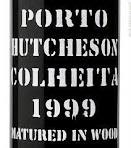What is port, Porto or "port-styled wine"? Simply put, Porto is a fortified red wine coming from the Duoro region of Portugal.
Starting with the red part, Porto wines are usually a blend of the native varietals, of which there are literally hundreds. The wine laws are very old in the Duoro; in fact the Duoro is the oldest protected wine region in the world having had laws passed in 1756 to safeguard it's wines authenticity. And so, back in the day, perhaps there were winemakers dabbling in any of the hundreds of applicable varietals but these days the dominant ones are Tinta Barroca, Tinta Cão, Tinta Roriz (a.k.a. Tempranillo in Spain), Touriga Francesa, and Touriga Nacional.
And what do I mean by fortified? Well as I said, the Duoro has some very old laws and several of these laws limit the quantity of Porto that can be produced in any given year. What does a port-producer do with the rest of the wine? Well some of it will be kept or sold as table wine (such as the famous Quinta de Crasto) but much of it will be distilled down to a local liqueur known as Aguardente. This is moonshine, in the most beautiful way. As it comes from the wine that it goes to fortify, the flavors will marry wonderfully but the real joy in adding the liqueur is that it stops the fermentation of the wine, leaving behind any residual sugar to remain as sugar.... acidic and playful tawny ports or sugary sweet candied ruby ports, it is the Aguardente that makes the wine what it becomes.
And so what of the Duoro? The Duoro is the name for both the wine-region and the massive river that carves it's way through northern Portugal. The wine gets produced in the wine-region which is inland from the coastal city of Porto and, back in the day, could only be transported down the mighty river by boat. Hence the fortified wine had to travel through Porto hence the name we give it.
And if you're wondering why the Portuguese couldn't ship the wine by anything other then the river? It's the canyon walls.... hundreds of miles of steep gorges hundreds of feet deep and in the 1700's and 1800's a daunting journey, especially compared with the relative calm of the river.
So what of Porto Hutcheson? In relative terms, Hutcheson is a new-comer; having been brought into the world in 1913 by Manuel de Almeida (http://www.porto-barros.pt/client/skins/english/site.htm). Manuel was a winemaker, yes indeed, but it seems to me that he was a businessman as well (perhaps above and beyond all else). Over the course of his career Manuel succeeded in not only opening Hutcheson, but keeping it open through 2 World Wars and a Great Depression. His grandson Manuel has succeeded and Hutcheson is still a family owned and operated endeavour.
1999 Porto Hutcheson Colheita
$35-40 USD *** Very Good Value ***
- visual: clear with trace sediment; light ruby core with substantial orange-brick rim
- nose: clean; fully intense and developing aromas of candied orange peel, light caramel, dates and figs, cranberry, raspberry juice, woodsy notes and a touch of clove finish
- palate: clean; sweet, fully intense (pomegranate) acids, full alcohol, medium body, medium (soft, chalky) tannins, moderate+ intense and youthful flavors with emphasis on red berry notes to start; cranberry, young raspberry, fresh strawberry, pomegranate followed by savory earthy flavors, wood notes and citrus peel. Very good balance, good structure and medium length
- conclusion: this wine has probably peaked, but will hold for several years. Drink now to 2020
- FOOD PAIRING: Vivid acids and high sugar levels can be a challenge; you will want to use some dairy to balance the acidity but keep your sweetness in the dessert to a minimum or risk making the port seem off-balance. Consider: dark chocolate torte with olive oil and balsamic vinegar, chevre ice-cream and star anise stewed plums
Manuel de Almeida was an impressive businessman: opening his own business and keeping it thriving through nearly insurmountable odds. No, he didn't just keep it running, he grew it... I often worry about what is or is not possible in this time of economic uncertainty, and yet the Universe keeps showing me examples of what IS.
More then we can ever hope for or imagine... and I can imagine alot~!
As always, I look forward to your comments and questions.
CINCIN~!!! SLAINTE~!!! CHEERS~!!!











